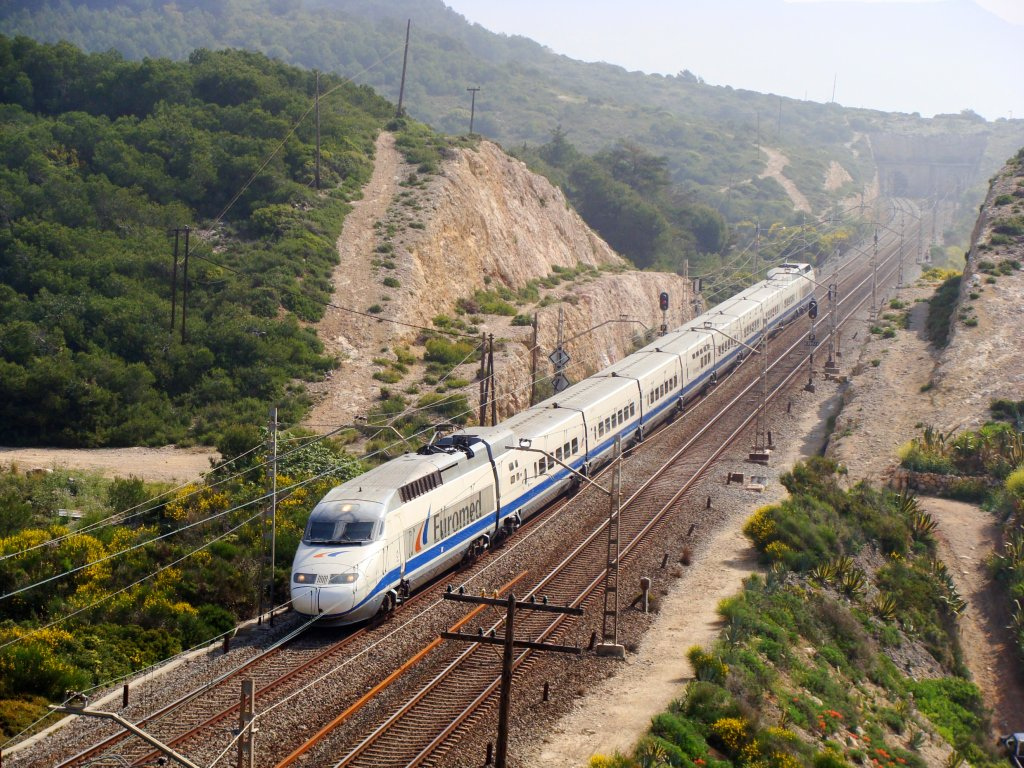Mini Sheet: Euromed 2025 : Paeonia cambessedesii (Spain 2025)
Euromed 2025 : Paeonia cambessedesii (Spain 2025)
08 July (Spain ) within release Euromed 2025 : Paeonia cambessedesii goes into circulation Mini Sheet Euromed 2025 : Paeonia cambessedesii face value 5*3 Euro
| Mini Sheet Euromed 2025 : Paeonia cambessedesii in catalogues | |
|---|---|
| Colnect codes: | Col: ES 2025.07.08-02 |
Mini Sheet is horizontal format.
Also in the issue Euromed 2025 : Paeonia cambessedesii:
- Stamp - Euromed 2025 : Paeonia cambessedesii face value 3;
- Mini Sheet - Euromed 2025 : Paeonia cambessedesii face value 5*3;
Mini Sheet Euromed 2025 : Paeonia cambessedesii it reflects the thematic directions:
Euromed entered commercial service on June 16, 1997, along a 523.4 km (325.2 mi) Mediterranean corridor, between the cities of Barcelona, Tarragona, Castellón de la Plana, Valencia and Alicante. Since January 2020 the Euromed service connects the city of Barcelona to the city of Valencia in 2 hours and 35 minutes and Barcelona to Alicante in 4 hours and 20 minutes while some services are extended to Girona and Figueres.
A flower, sometimes known as a bloom or blossom, is the reproductive structure found in plants that are floral (plants of the division Magnoliophyta, also called angiosperms). The biological function of a flower is to effect reproduction, usually by providing a mechanism for the union of sperm with eggs. Flowers may facilitate outcrossing (fusion of sperm and eggs from different individuals in a population) or allow selfing (fusion of sperm and egg from the same flower). Some flowers produce diaspores without fertilization (parthenocarpy). Flowers contain sporangia and are the site where gametophytes develop. Many flowers have evolved to be attractive to animals, so as to cause them to be vectors for the transfer of pollen. After fertilization, the ovary of the flower develops into fruit containing seeds. In addition to facilitating the reproduction of flowering plants, flowers have long been admired and used by humans to beautify their environment, and also as objects of romance, ritual, religion, medicine and as a source of food.
Flora is the plant life occurring in a particular region or time, generally the naturally occurring or indigenous—native plant life. The corresponding term for animal life is fauna. Flora, fauna and other forms of life such as fungi are collectively referred to as biota. Sometimes bacteria and fungi are also referred to as flora, as in the terms gut flora or skin flora.



